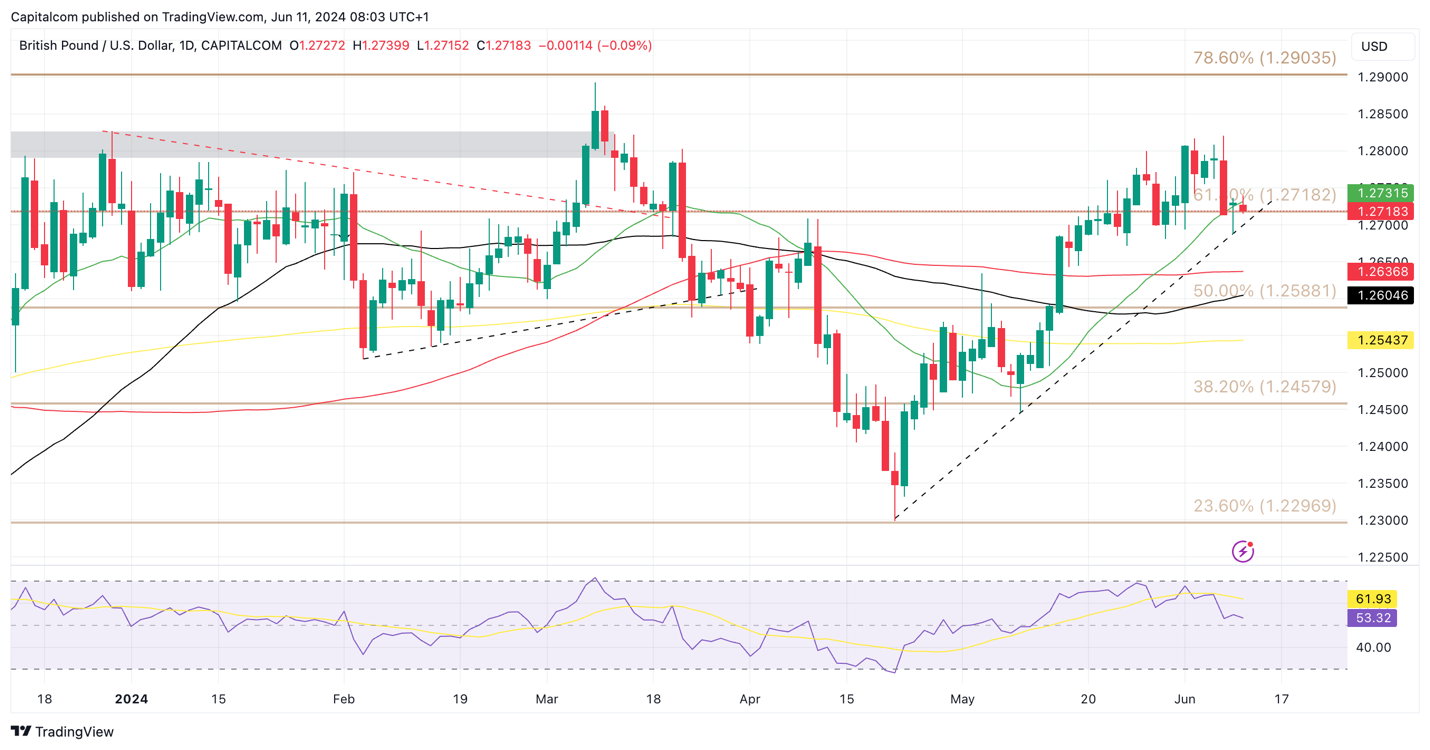GBP/USD Latest: UK wages rise despite higher unemployment
GBP/USD continues to face downward pressure despite higher wages in April
UK wage growth remained strong in the three months to April despite a slowing jobs market. The unemployment rate rose unexpectedly from 4.3% to 4.4%, the highest level since August 2021. Annual growth in average weekly wages, including bonuses, remained steady at 5.9 per cent, unchanged as the data for the three months to March was revised higher. Markets had been hoping it would drop to 5.7%
The figures are likely to reinforce the view that the Bank of England will have to wait a little longer to start cutting rates as inflationary pressures are still present. Growth in consumer prices (CPI) dropped significantly in April – as forecasted by the central Bank – but some pockets of the economy continue to exert pressure on prices. The May CPI data will be published on June 19, a day before the Bank of England I set to meet to discuss their monetary policy.
On the charts, UK assets are little changed this morning after the data release. The combination of higher unemployment and wages makes the forecasting a little trickier. The immediate response from the Bank of England is expected to be to keep rates unchanged, but forecasting when the bank will be able to start cutting rates has become harder. Markets are currently assigning a 39% chance that the BoE could cut rates by 25 basis points in August – a date which had previously been set as a starting point for the cutting cycle. The first fully priced-in cut is now in November.
GBP/USD is currently hovering around 1.2725 with little direction. The US dollar’s resurgence on Friday after the stronger US jobs data saw the pair drop below the 20-day SMA. The pullback continued on Monday morning but the pair managed to find support at the ascending trendline from the April 22 lows. This line remains a key focal area of support. A drop below it (currently at 1.2700) could see a further pullback below 1.2650. The US Federal Reserve meeting on Wednesday will likely be key in determining the momentum on the USD dollar side, and a more hawkish central bank could see GBP/USD drop further this week.
GBP/USD daily chart

(Past performance is not a reliable indicator of future results.)